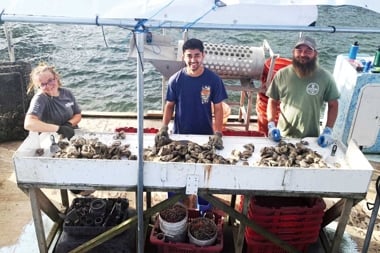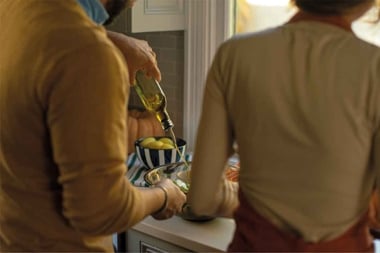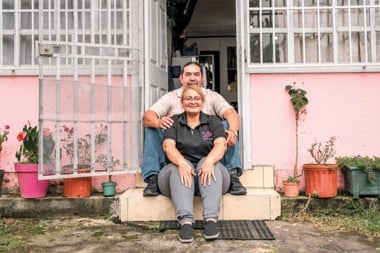Better for One, Better for All
Reusable cups that help curb the spread of microplastics

With microplastics becoming an imminent threat to both human and environmental health, tackling the issue of single-use plastics has never been more critical. Better For All’s reusable and home-compostable cups, soon available at a stadium near you, are changing the game.
The problem with plastic
For many people, it’s hard to imagine the last time they went through a day without taking advantage of some kind of single-use plastic product. From plastic bags, bottled water, and take-out containers to medical gloves and cleaning supplies, single-use plastics are everywhere—and increasingly in places we didn’t expect.
Since the 1940s, when plastics began to be mass produced, they have become a ubiquitous part of life. Thanks to their convenience, low cost, and ease of use, plastics now play a major role in everything from manufacturing to fast food. Unfortunately, plastic’s low degradability has created a widespread and growing environmental and health crisis.
According to the EPA, 35.7 million tons of plastic waste is produced in the US each year. Because plastic isn’t biodegradable, plastic waste in landfills, construction sites, households, and factory production ends up breaking down into microplastics, which can slip into the soil, air, and water supply.
While microplastics (which are defined as plastic fragments measuring less than less than 5 millimeters) may be tiny, they are causing outsized damage. In fact, the World Economic Forum's 2024 Global Risks Report listed microplastic pollution as the tenth greatest threat, one that is at a critical tipping point requiring urgent action.
Even the scant 9 percent of plastic that is recycled isn’t doing much to tackle the problem, as the recycling process itself can create microplastics. In the US alone, plastic recycling may create as many as 400,000 tons of microplastics each year.
Critically, plastic materials represent between 60 to 80 percent of the waste present in the marine environment and 90 percent of the waste floating on the seas and oceans. According to the United Nations Environment Programme, up to 23 million tonnes of plastic waste leaks into the world's water systems every year.
Microplastics have also been found in soil ecosystems, potentially compromising crop health. Because microplastics can release harmful pollutants, we are seeing worldwide effects of the damage they can do to our oceans, lands, and air—and the materials we consume from those sources.
Composting vs. recycling
While both methods have been mainstays of the environmental movement, there are some key differences.
|
Composting |
Recycling |
|
Breaks down materials to create new soil. |
Breaks down materials to be remade into new materials. |
|
Acts as a fertilizer for soil. |
Consists of non-organic waste like paper, glass, metal, and plastic. |
|
Consists of organic waste like fruit, coffee grounds, and leaves. |
Reduces landfill waste and conserves resources. |
|
Reduces greenhouse gas emissions and conserves water. |
What and how you recycle can vary by location. |
|
Can be done at home, or commercially. |
Breaks down materials to be remade into new materials. |
The human cost
As devastating as microplastics are for Mother Earth, they also pose a significant threat to human health. Estimates say that the average American eats, drinks, and breathes in more than 70,000 microplastic particles per year. These particles find their way into our bodies through various channels, including food like seafood and honey, bottled water, and even the air we breathe. Microplastics have been found in human blood, breast milk, livers, and kidneys.
While we are still learning about the effects of microplastics on human health, the initial research has been alarming. A 2023 study found that microplastics “can interfere with important biological processes in the human body and can cause disruption of the endocrine, immune system; can have a negative impact on mobility, reproduction and development; and can cause carcinogenesis.” Additionally, the New England Journal of Medicine has published research that links microplastics to heart attacks, strokes, and even death.
In terms of human longevity and healthy aging, the science is also alarming. A 2025 report from the University of New Mexico Health Sciences found that microplastics in human brains have increased 50 percent over the past 8 years, and dementia patients had 10 times as many microplastics present as the general population.
With the use of plastic so firmly rooted in the convenience we have come to expect as a modern society, how can we make changes that protect the health of both the environment, and ourselves?
Better for one, better for all
One company that is stepping up to tackle the plastics problem is Pasadena-based Better For All. Better For All has developed a reusable and biodegradable cup that is designed to replace single-use plastic cups—which Americans use 120 billion of per year.
“It seemed to me that the problem of one-use or limited-use products is a problem worth solving.” says CEO Bob Meers. “The cup industry has historically used a manufacturing process called thermal forming, and there is 40 percent waste there. I’m not a big believer in waste.”
Better For All believes that their solution to the problem of single-use plastics lies in PHA (polyhydroxyalkanoate), a material that is reusable and non-toxic, can sustain heat up to 212 F, and is at-home compostable. This unique material is known as a biopolymer, which is a biomaterial made by living fermentation microorganisms.
Noting that PHA is commonly used in the medical industry, Meers thought that the material was an untapped solution to a significant problem, noting that, “I think you have to design the end-of-life into your product at the beginning.”
“PHA can be made in existing bio fermentors used to make soy sauce amino acids, so there has been a ton of experimentation to find applications for it,” says Head of Product Raegan Kelly. “It’s anaerobically compostable, so we know that our material will even biodegrade in a low or no oxygen environment.”
One significant selling point of Better For All’s reusable cups is the ability to compost them at home. While a growing number of competitors’ products are selling themselves as compostable, it is a common problem to find that many of these products can only be properly composted in a commercial facility. Better For All’s cups can biodegrade in a backyard compost pile, causing no adverse effects to the soil. If the cup still ends up in a landfill, it will biodegrade naturally without releasing harmful chemicals into the environment.
Made by plants and designed to return to the soil, Better For All has created a reusable cup that could replace the industry standard single-use plastic cup. The next stop? A major venue near you.
Doing the dirty work
Composting could help reduce methane gas emission by diverting 28% of waste that would otherwise be deposited in landfills. If you’re interested in composting but unsure if you have the space or resources, check with your local natural health retailer or community farm for resources.
The main stage
While the efforts of individuals can’t be denied, Meers and Kelly knew that when it comes to making a major difference, you have to think big. The company recently partnered with the Oak View Group to tackle a major source of plastic waste—sports and entertainment venues.
According to one watchdog publication, an average stadium uses 800,000 plastic cups for a year’s worth of concerts, and 571,659 cups throughout an NFL season. The Oak View Group, which founded a sustainability network that includes sites like the Prudential Center, Dodger Stadium, Fenway Park, Wrigley Field, and Citi Field, says that their members “currently divert an average of 32 percent of their waste through reusing, recycling, and composting.”
“In terms of compostable products, we thought the stadium could be an influencer to 50,000 people, 20,000 people, 10,000 people, or 100,000 people in one shot,” says Meers. “Raegan created an aesthetic cup where people will ask, ‘What am I looking at here?’ And then they realize that what they are holding is a fully compostable cup.”
With the addition of Better For All’s compostable cups, venues can see a major change in their microplastics contribution, without asking attendees to alter their behavior (or their favorite gametime beverage). The next time you see your favorite artist play a concert, or root for your home team at a game, you may be able to cheers to something pretty impressive—sustainability.
Composting—When to DIY, and when you need a helping hand.
Composting at home is easy, safe, and can help improve the health of your soil. However, there are occasions that call for commercial composting help:
- Meat and dairy items -– Some animal-based products can lead to foul smells and pests in a backyard.
- Hard organic materials - Commercial facilities have equipment like grinders to break down oversized or hard organic materials like avocado pits and shells, and large items
- Plastic products - Only a commercial facility will create enough heat needed to properly break down items like plastic bags, cutlery, and other plastic products.
This article was originally published in the May 2025 issue of alive magazine.





